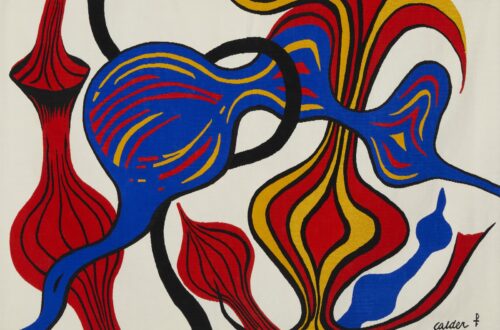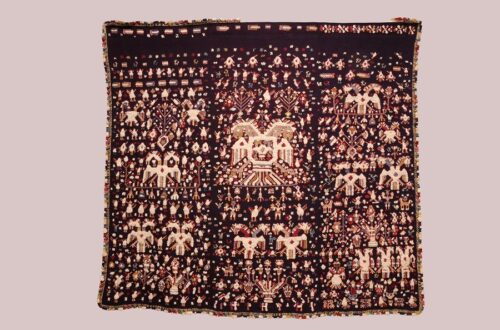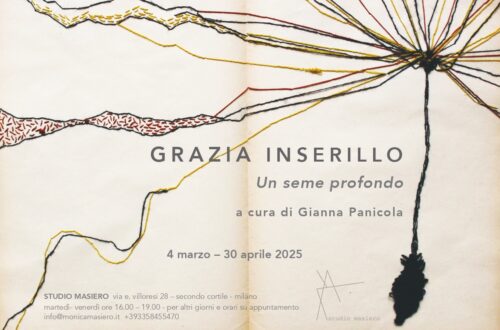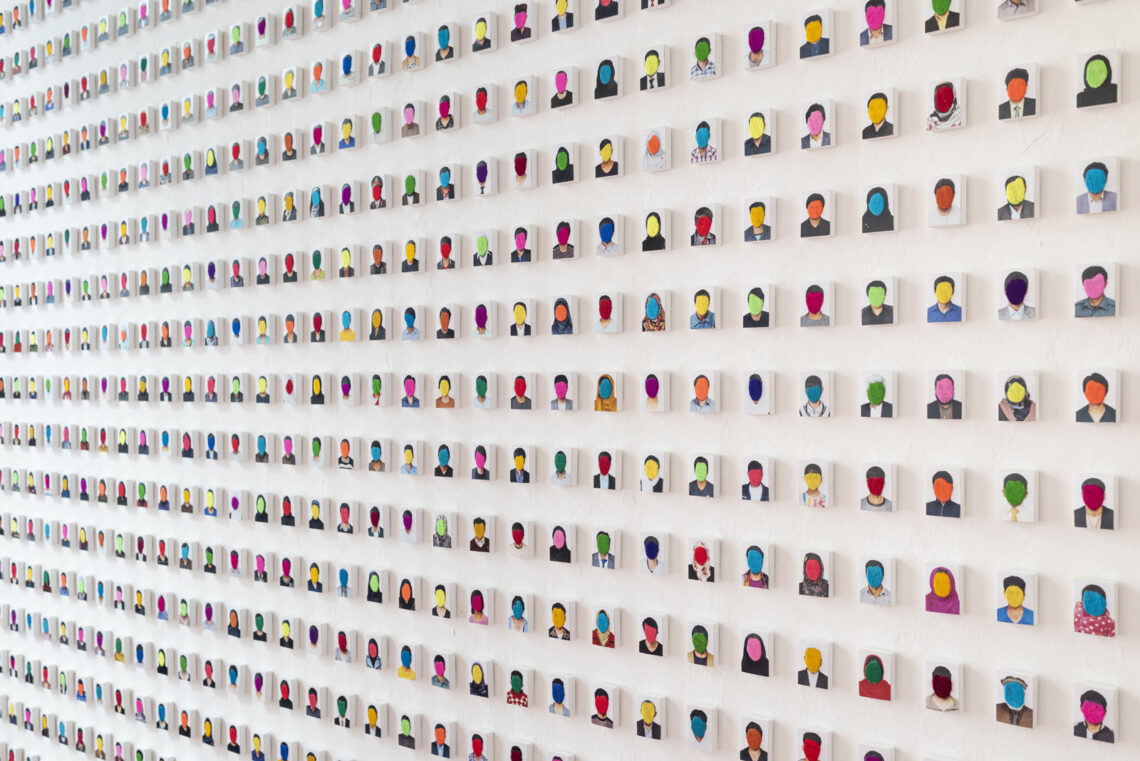
LATIFA ZAFAR ATTAII: I COULD SEE FLOWERS
I Could See Flowers, the first solo exhibition in Italy by Hazara artist Latifa Zafar Attaii, encapsulates the core of her artistic inquiry. At its heart lies the notion of identity, which Latifa explores in both its personal and collective dimensions. Rather than attempting to disentangle them outright, she seeks to grasp their shared nourishment—one that irrigates an ethical and political path rooted in the right of every individual to exist and in the shared courage to uphold and protect that right.
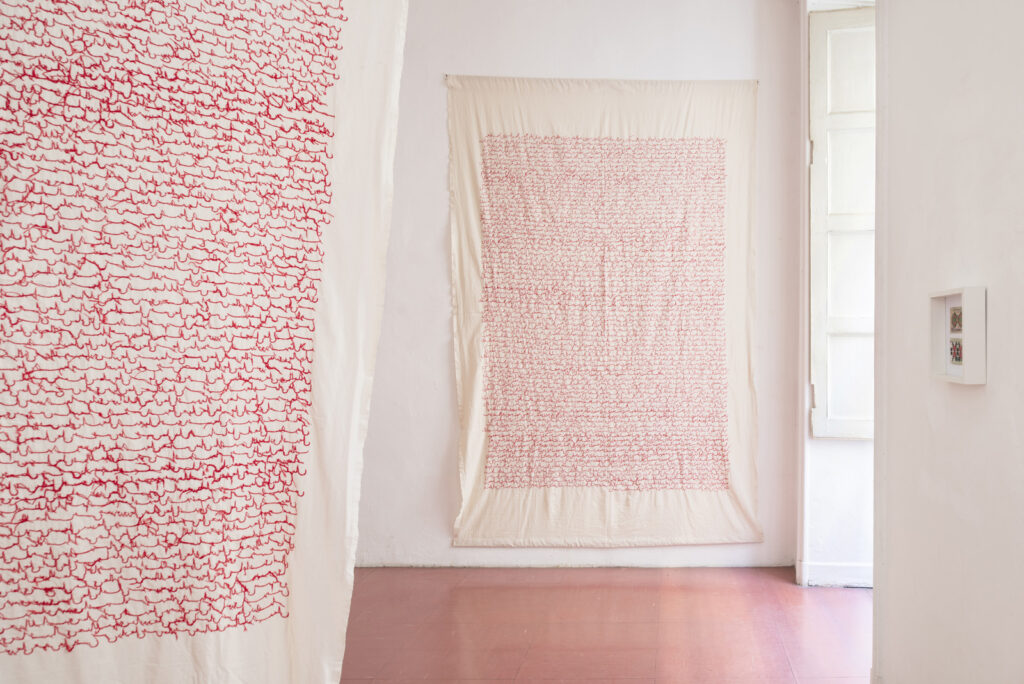
Through her art—where the ancient tradition of Afghan embroidery engages in constant dialogue with other media, particularly photography—Latifa sifts through her own memory and that of her people, retrieving fragments of identity at risk of being irreparably eroded by the passage of time and Afghanistan’s sociopolitical history.
Two works in the exhibition explicitly bear witness to the vivid and searing narrative of the genocide suffered by the Hazara people since the late 19th century. Memorial Thread was conceived as a shroud for those who have fallen victim to this massacre from March 1995 to the present, becoming a collection of erased identities and a collective indictment of this ongoing tragedy. Two Thousand Individuals, on the other hand, carries the weight of 2,000 life stories of those still fighting for their survival, rendering each one with a rare immediacy through a polychromatic interplay of revelation and concealment—an essential motif in the artist’s poetics.
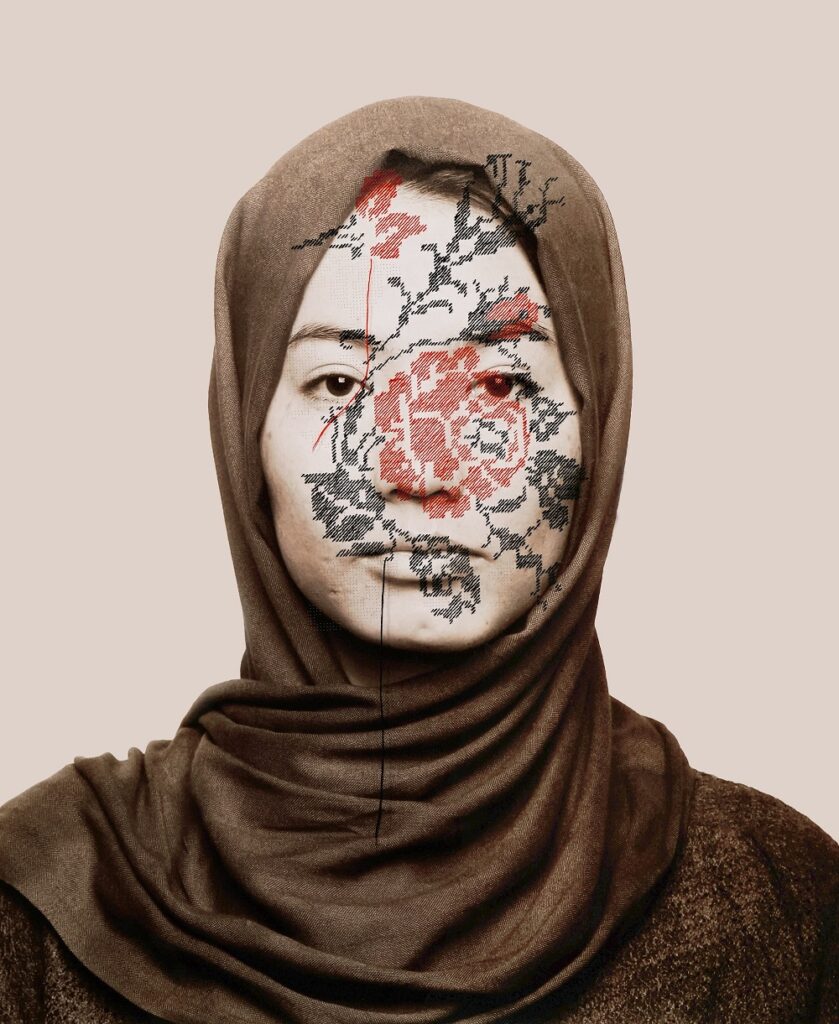
The exhibition’s journey through the intimate threads of Hazara history continues with a series of Iranian and Afghan banknotes overlaid with floral patterns. Once emblems of the complex economic interests that taint efforts to protect the Hazara people, these banknotes, now infused with Latifa’s colors, become vibrant resonators of the very culture they were once complicit in erasing.
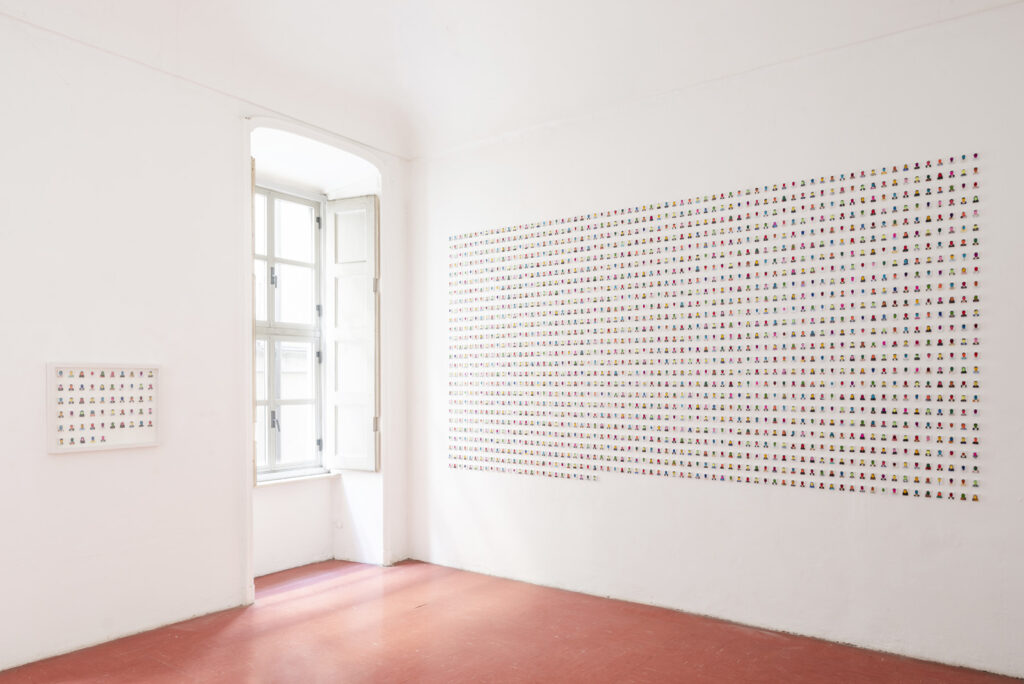
Embroidery thus becomes, in equal measure, a safe haven where the faces of those who would be deprived of their freedom can be safeguarded, and an ornament that, in Self-Portrait, resonates with the indomitable pride of narrating to the world the symbolic and iconographic polyphony that weaves together the existence of every member of the Hazara community. This iconography finds its ethical rhythm in flowers and their heightened chromatic expressions—an enduring hymn to transforming everyday life, even through humanity’s harshest winters, into a perpetual spring.
The exhibition, curated by Exo Art Lab, is open until April 12, 2025, at Weber & Weber Arte Moderna e Contemporanea, Via S. Tommaso 7, Turin IT (visiting hours: Tuesday to Saturday, 3:30 PM – 7:30 PM).



